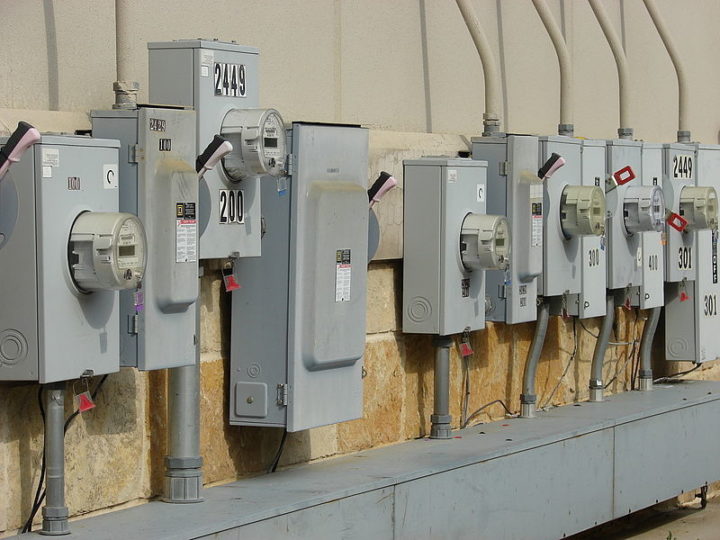P272: worth half an hour of your time?
Changes in business energy bills are coming, but how do they affect everyone?
By Jonny Marshall
Share
Last updated:
In the world of energy policy, countless developments slip under the radar. Often overly technical, bureaucratic or niche, many changes that are the result of years of proposals, consultations and lobbying only become known to those deep within the industry.
Despite its catchy name, the P272 obligation could be well-described as largely unnoticed. Amending the way that certain businesses are billed for their electricity may seem inconsequential to most of us, but it is an important stepping stone towards the smarter, more flexible grid that the vast majority of industry, onlookers and (sensible factions of) the government wants.
By the beginning of April, all of the UK’s 160,000 medium-sized businesses must be compliant with P272. It requires electricity meters to be capable of being read remotely and to record consumption on a half-hourly basis. Sound familiar? Parallels can be drawn between the scheme and the UK’s oft-maligned residential smart meter rollout. However, in direct contrast to the furore created by changing meters in UK homes, businesses have been getting on with it; phasing in the change since November 2015. Around 30% of affected businesses had switched by early 2016, with just the laggards still to make the change.
The April deadline brings medium sized companies into line with the most energy intensive, many of which have been optimising their energy consumption for years. Households and the smallest businesses remain unaffected.
What’s the point?
Simply put, switching to half-hourly metering will give businesses more control over their energy bills. Current meters are generally read 12 times per year, with bills showing consumption during each month. The new system will provide companies with data accrued over 17,520 readings, generating a comprehensive data series to analyse and use to optimise energy use.
This will allow businesses the option of avoiding using energy when it is at its most expensive, usually between 4 and 7pm on a weekday. Rescheduling processes that are not time sensitive away from these hours will allow companies to cut costs, gain a competitive advantage and boost profits, surely music to the ears of directors and shareholders.
An average business taking part can expect to shave up to £600 per year from energy bills, the equivalent of £116 million across the sector as companies take back control and cut system-wide waste.
Adding a temporal factor to energy bills will make them more complicated, which may take some getting used to, but will allow them to better reflect variations in the cost of electricity throughout the year. Energy bills have long since lacked the detail of many other business costs, with procurement managers and traders building up skills over years to ensure raw materials and services are purchased at the lowest possible costs, and products sold at the highest. Why should energy be different?
As an added bonus, billing errors will become less common as meter accuracy increases, and will be much easier to resolve if they do occur due to increased granularity of energy use information under the new system.
Why is this interesting?

When being considered by Ofgem, P272 was found to have the potential to increase value for money, boost system sustainability and contribute towards the extremely high security of supply enjoyed in the UK. These three factors are a perennial source of debate between NGOs, industry and the government, and are often played off against each other.
Increased clarity over energy consumption is a vital bridge to cross before demand side response (DSR) can be rolled out on a large scale. DSR involves increasing flexibility to balance the grid, replacing (expensive) services contracted from the UK’s ageing fleet of coal and gas power stations.
Around 60% of UK power consumption is in commercial and industrial sectors, therefore these changes open the door to a huge swathe of energy use that can be made more flexible and responsive. National Grid is reported to be looking for businesses to provide around 6 GW of DSR balancing services by 2026 (more than 10% of the highest annual demand), and just this week contracted more than 300 MW of turn-down DSR for the coming winter.
DSR, while being far from a golden bullet, is becoming increasingly recognised as a vital tool for cheaply and efficiently managing power grids around the world. In addition to balancing the network, it will allow the cost of running and maintaining the grid to fall - further savings that end up in company and household current accounts.
Rolled out extensively in some US networks and gaining favour across Europe, DSR sits alongside the burgeoning storage industry and a projected rapid increase in interconnector capacity that is set to unleash the £8 billion of annual savings identified by the National Infrastructure Commission, in addition to making it easier to meet emissions targets.
While businesses have a leg up on UK homes, signs of the future are starting to appear. British Gas last year launched a tariff offering free electricity on one weekend day, to incentivise shifting demand to off-peak times, while Green Energy UK has offered the first domestic tariff that links consumption and time, giving families more control over their bills.
As smart meters become commonplace in more and more of our homes, these tariffs will become increasingly common. Choosing to shift demand away from peak hours will not only benefit billpayers in the pocket, but will allow the modernisation of an electricity system that is largely stuck in the past.
Share